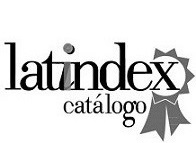Memes in the contemporary circulation of Chaco and Corrientes
DOI:
https://doi.org/10.30972/dpd.13217505Keywords:
memes, circulation, , contemporary era, contemporary eraAbstract
We approach the media phenomenon of the meme as a complex semiotic condensation with a status not yet agreed upon. We propose to address it with the theoretical-methodological tools that Carlón and Fraticelli provide us. We assume that we are in the contemporary era, beyond the era of mass media. Memes are an exponent of this new stage of mediatization where individuals and collectives manage their own media. Then, in summary, we will present the state of the art of the field of study of memes and two fundamental considerations: the key influence of contemporary art and the consequences of the digitalization of the image.
In the second section we advance in the study of two cases: that of the former dean of the Faculty of Humanities of UNNE, Aldo Lineras (Chaco) and that of the governor of Corrientes, Gustavo Valdés. We will use temporal schemes to visualize the circulation of each meme from its respective origin: a WhatsApp audio and a radio interview. We will also use spatial schemes to expose the configuration of the communication collectives built by the fake enunciators who produce each meme based on the appropriation of the discourse of professional individuals.
We conclude that we can study memes with network semiotics tools by allowing us to analyze cases with dissimilar trajectories. Also by accounting for the composition of the collectives generated by these memes we can focus on the dimension of power, both that of the enunciators and that of discursive circulation.
Published
How to Cite
Issue
Section
License

This work is licensed under a Creative Commons Attribution-NonCommercial 4.0 International License.
La Revista De Prácticas y Discursos. Cuadernos de Ciencias Sociales solicita sin excepción a los autores una declaración de originalidad de sus trabajos, esperando de este modo su adhesión a normas básicas de ética del trabajo intelectual.

Este obra está bajo una licencia de Creative Commons Reconocimiento-NoComercial 2.5 Argentina.






52.jpg)


.png)




